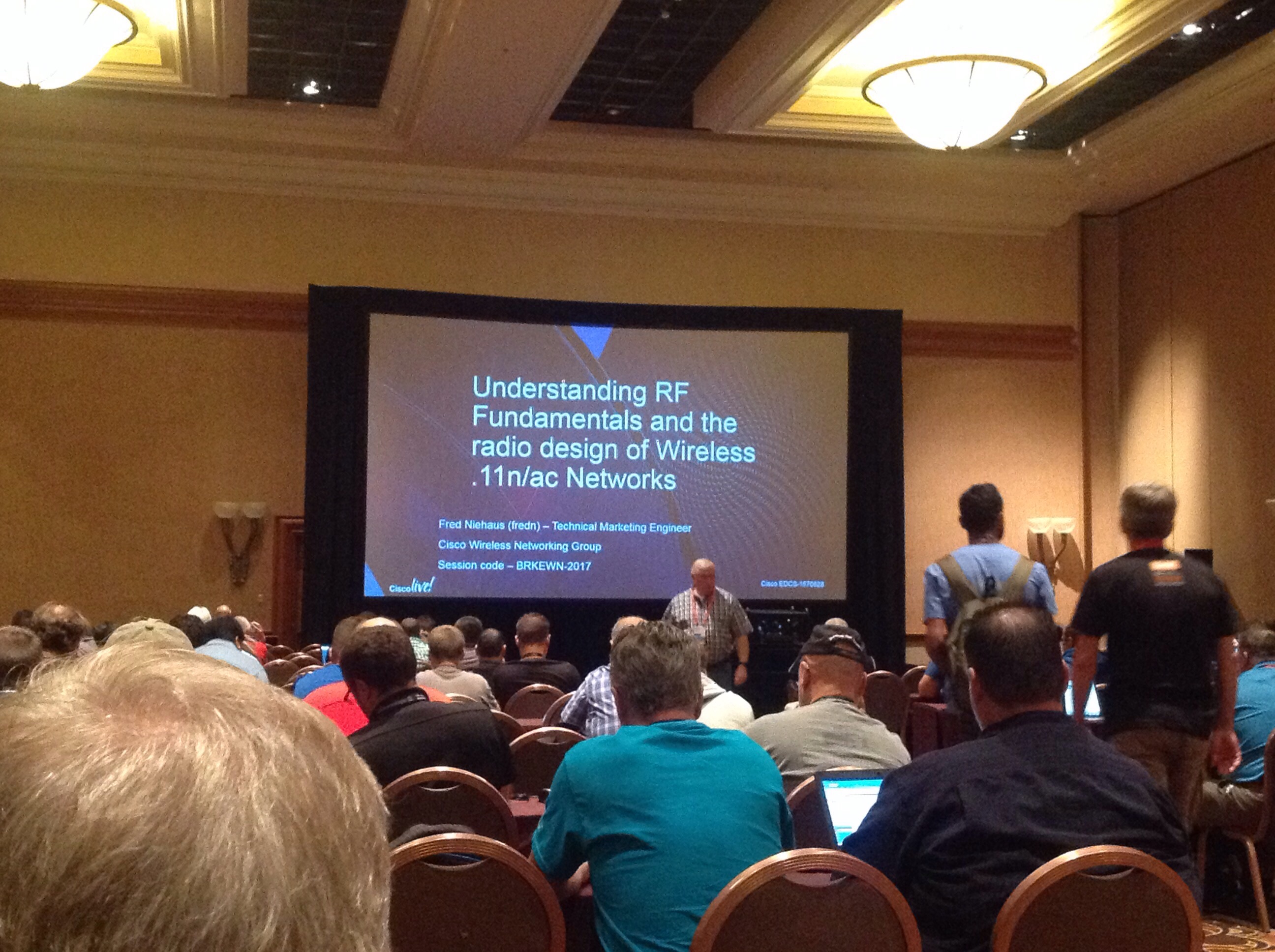BRKEWN-2017 -- Understanding RF Fundamentals and the Radio Design of 11n/ac Networks

Presenter: Fred Niehaus, Technical Marketing Engineer, Cisco Wireless Networking Group
Basic understanding of radio:
- Every radio wave has a physical size (proportionate to its wavelength)
- The lower the frequency, the physically longer the radio wave
- Higher frequencies have shorter waves and as such, takes more power to move them greater distances
- 5Ghz UNI 2 and UNI 2 Ext overlap with DFS (RADAR)
- Dynamic Freq Selection (DFS) requires that if a radio is operating in UNI 2/UNI 2 Ext and it hears something that is not WiFi, it has to get off that channel
Antenna basics:
- Directional or omnidirectional (360 degree)
- Cisco color markings: blue: 5, black 2.4, orange 2.4 and 5ghz
- Low gain omnidirectional antennas radiate in a beach ball pattern
- Omni-direction dipoles in a pancake pattern
- Yagis are directional; radiate more like a flashlight
- Patch: multiple elements in a square form factor; radiates like a flashlight
- Dipole: does not require a ground plate as the bottom half of the antenna is the ground plate
- Monopole requires a (conductive surface) ground plate; monopoles are shorter than dipoles and often used on APs (because of the smaller size) and they can use the metal in the AP as the ground plate.
- Azimuth: how wide; Elev(ation): how high
Antenna patterns
- Azimuth antenna pattern is looking straight down on the antenna
- Elevation pattern is looking side on
Multiparty diversity and beam forming:
- If signal arrives at a receiver on both the high side of the wave and the low side of the wave, they cancel each other out (receiver effectively gets nothing)
- Even if they don't totally cancel each other, they reduce signal strength
- Beam forming allows the signal to be best directed towards the client
Understanding 802.11n and 802.11ac:
- Too much to write...
Mid-span power injectors:
- AIR-PWRIN2/3 - pre 802.11n APs
- AIR-PWRIN4 - 802.3af (15.4W) and pre-standrard 30W
- AIR-PWRIN5 - 802.3af
- AIR-PWRIN6 - 802.3af and 802.3at (recommended for all new enterprise deployments)
- For reference: AP-2800 powers at 26W; AP-3800 powers at 30W
Multi User MIMO:
- Beam forming. That is able to focus the RF at a client while sending NULLs to other clients (simultaneously)
Installation and deployment:
- Tons of mounting options for Cisco APs
- Vanity covers to change the color of the AP (Terrawave or Oberon are vendors)
- "The minute you put an antenna near something metal, you make it directional" -- Fred; don't put your antennas near metal stuff (1 meter/3ft separation)